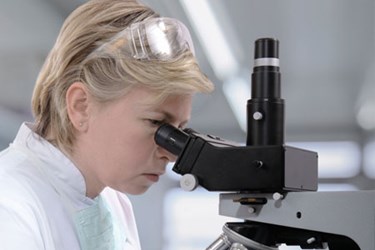Stanford Scientists Find Way To Quicken Drug Discovery

Bioengineers from Stanford University have come up with a new method to observe kinases inside living cells, in the hopes that this new technique can help speed up the discovery and development of potential new drugs.
The new method allows researchers to observe and compare kinase activity in healthy cells compared to diseased cells. It also enables the introduction of an experimental drug to test how the proposed treatment impacts the living cell.
Prior to the technique, scientists had to pulverize cell samples to extract and measure levels of relevant kinases, of which 500 in the kinase family are deemed crucial to drug discovery. If a drug is developed to treat a condition, it would have to be administered to a different cell culture and undergo the same pulverize-extract-measure method to observe kinase activity.
The technique developed by Stanford changes this routine and instead provides a way to read activities of multiple kinases in living cells. It also eliminates the need to administer an experimental drug to a different cell sample and allows scientists to observe changes in the same cell sample.
“We've been able to observe multiple kinases functioning in living cells, which is something no one else has ever seen,” said Markus Covert, an assistant professor of bioengineering at Stanford University and lead author of a paper published in the journal Cell.
Professor Covert’s team has successfully applied the Kinase Translocation Reporter (KRT) tracking technique to five kinases to observe their locations inside living cells. The technique has potential to be a useful tool in drug discovery. “Imagine you wanted to discover a new drug. You could throw KTRs into a cell culture and observe kinase activity under different conditions,” said Prof. Covert. The team hopes to make the technology widely available some day for drug discovery.
The research was partly supported by the National Institutes of Health and the NIH Pioneer Award. The University’s Office of Technology Licensing has filed a provisional patent application based on the researchers’ work.
